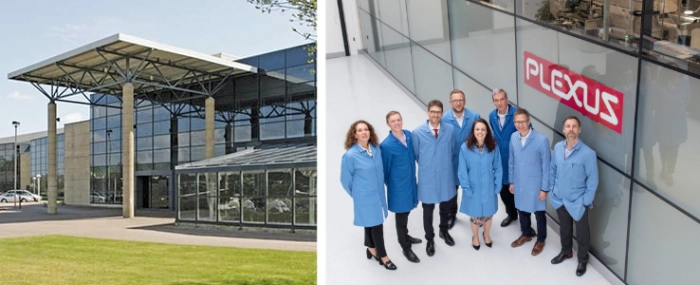
© Plexus
Electronics Production |
From start to finish – ventilators delivered in less than three months.
When the COVID-19 pandemic truly hit Europe the word on everyones lips were “ventilator” – and the following question was; “does our healthcare providers have enough of them?”
Faced with the COVID-19 pandemic, the UK government challenged the nation's manufacturers to increase the number of ventilators available within the NHS (National Health Service). Plexus was one of the companies that rose to the challenge to work as part of a consortium aiming to bring a new ventilator to market in record time.
At the end of March 2020, the Plexus team at the Livingston centre shifted focus to work the project as part of the UK Government’s Ventilator Challenge. And it wasn't just any challenge; design and develop a brand new, life-preserving product in less than 3-months and rapidly transition into volume production. A project the EMS provider has detailed in a case study.
Within a few days of the UK Government’s announcement of the ventilator challenge, the team at Plexus received the product specifications and initiated the design process. The electronics design was led by a core team out of the Livingston Design Center, working with colleagues from of the Darmstadt Design Center and three other Plexus Design Centers across the globe. Utilising this setup, the company could make sure that the could continue around the clock.
The team also worked closely with a medical equipment company in Germany and Babcock International Group in the UK to accelerate the development of the electronics used in the ventilator.
“Faced with a surge in demand for ventilators across the world, our supply chain team evaluated a potentially insurmountable challenge. The need for our supply chain and engineering teams to work in concert was more important than ever,” the company writes in the case study.
As the supply chain team secured material, many of the components available were not the designer’s first choice. This led to redesign activities to ensure part selections were made that supported the critical timeline of this project.
As the company puts it, this close relationship between the supply chain- and design teams – throughout the design phase – allowed the product to function as planned and also ensured a suitable supply of materials both for initial prototypes and onwards into volume manufacturing. The sourcing strategy did however require a high level of localization.
“Our UK-based printed circuit board suppliers, Merlin Circuit Technology Ltd and Amphenol Invotec, went above and beyond by adding additional shifts to their operations and by buying additional material to ensure that we had what we needed to complete this project on time. We very much appreciate their commitment to working alongside us,” David McIntosh, Senior Product Development Sourcing Manager, explains in the case study.
A significant milestone for the team was the first prototype unit which was produced by the Plexus Livingston rapid prototyping team. After 2 further prototypes and 3 rounds of design enhancements, the next 20 units were part of the products sent to the MHRA for initial approval. Worth mentioning is that this was accomplished in only 38 days after the initial specifications were received.
The EMS provider’s volume manufacturing team in Kelso, who had been involved since the early design stages of the project, were then able to complete new product introduction (NPI) builds. These NPI builds verified the design, validated the production process and help establish appropriate testing procedures.
To summarise; in the space of 38 days, the electronics went from a concept to a working prototype assembly. Another 22 days later the entire project had transitioned to production. 60 days, is all it took to go from idea to production.
“To take a design from concept to mass production in the space of three months has only been possible by harnessing the experience of our global team and the shared vision of the partners in the consortium,” Anthony Green, Director of Project Management, says in the case study.

